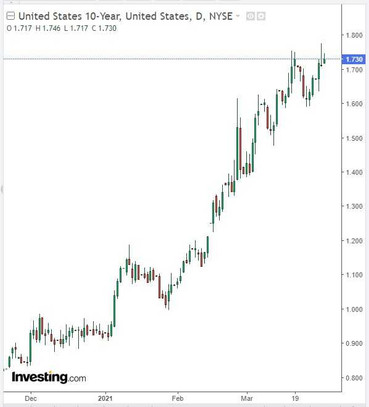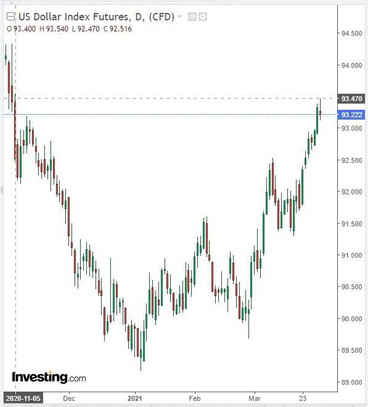As shown by the data published at the beginning of today's Asian session, the recovery of the Chinese economy continues, gaining momentum. Thus, the official purchasing managers' index (PMI) for the manufacturing sector in China in March was 51.9 against 50.6 in February (with the forecast of 51.2). The country's manufacturing sector has fully recovered after stopping production during the lunar New Year celebrations.
The PMI index of business activity in the service sector for March rose sharply from 51.4 to 56.3 points, significantly exceeding forecasts (52.6).
Positive macro statistics from China contributed to the strengthening of the yuan and commodity currencies against the US dollar.
China consumes about half of the world's supply of metals, including 75% of the iron ore needed to make steel, as well as 15% of the world's oil supply. The country is the largest buyer of raw materials and a supplier of the widest range of finished goods to the world commodity market, as well as the most important trade and economic partner of Australia. Therefore, strong macro statistics from China have a positive effect not only on the yuan quotes, but also on the Australian dollar, which has strengthened during today's Asian session.
The Australian dollar also received support today from positive data from Australia. Thus, the number of building permits issued in Australia in February rose by 21.6% against a decrease of 19.4% in January. The forecast assumed a more modest growth of +5%. In annual terms, the indicator increased from 19% to 20.1%.
Thus, the AUD / USD pair rose during today's Asian session and is traded near the 0.7620 mark at the time of this article's publication, 25 pips above today's opening price.
Meanwhile, the yield on US government bonds continues to rise, supporting the US dollar. Thus, yesterday the yield on 10-year US bonds rose to a new 14-month high of 1.776%. The rise in US Treasury yields reflects investor optimism about the recovery in the US economy.
As the Conference Board reported yesterday, the consumer confidence index rose to 109.7 in March against the revised downward value of 90.4 in February. Economists had expected the index to reach 96.8 in March.
Consumer confidence is on the rise for the third straight month as new Covid-19 infections decline and millions of Americans are vaccinated daily. In addition, many households across the country have become recipients of government payments under the new stimulus package.
Consumer confidence in the United States rose sharply in March, reaching its highest in 1 year, as Americans were more optimistic about the business environment and the labor market situation, as well as the short-term outlook for the economy.
"The consumer sentiment of the current conditions and short-term prospects (of the economy) has improved significantly, which indicates the likelihood of further acceleration of economic growth in the coming months", the Conference Board said.
Federal Reserve Bank of New York President John Williams also said on Tuesday that he is optimistic about the outlook for the economy, adding that low central bank interest rates will help it recover from the pandemic. "I am optimistic about the economy as a whole", Williams said.
Markets are awaiting a speech today (at 20:20 GMT) by US President Joe Biden, who is to set out the details of a previously announced plan to change the cost of supporting the economy in the amount of at least $ 3 trillion. Investors' attention on Wednesday will also be on the ADP (12:15 GMT) report on private sector employment, which will precede Friday's labor market data for March.
According to economists' forecast, the growth in the number of workers in the US private sector in March amounted to +550,000 (against an increase of 117,000 in February, 174,000 in January, a fall of -123,000 in December), the number of new jobs created outside the agricultural sector, amounted to +0.639 million (against +0.379 million in February, +0.049 million in January, -0.140 million in December, +0.245 million in November), and unemployment fell to 6.0% (against 6.2% in February, 6, 3% in January, 6.7% in December and November).
These are strong indicators that should support the US dollar.
Economic growth rates, government bond yields and the Fed's restrained position in relation to growth in government bond yields support the US dollar, putting pressure on competing currencies.

As of this posting, DXY futures are traded near 93.22, just below today's local high of 93.47, which is in line with early November 2020 levels.

Economists expect that further improvement in the US economic situation will lead to further strengthening of the dollar.
As for the AUD, it is also worth paying attention to the publication at 21:30 and 22:00 (GMT) of the PMI indices in the manufacturing sector of the Australian economy and the publication on Thursday (00:30 GMT) of data on retail trade and the trade balance of Australia. Positive data will support AUD. Otherwise, we should expect a weakening of the Australian dollar and a fall in the AUD / USD pair.





